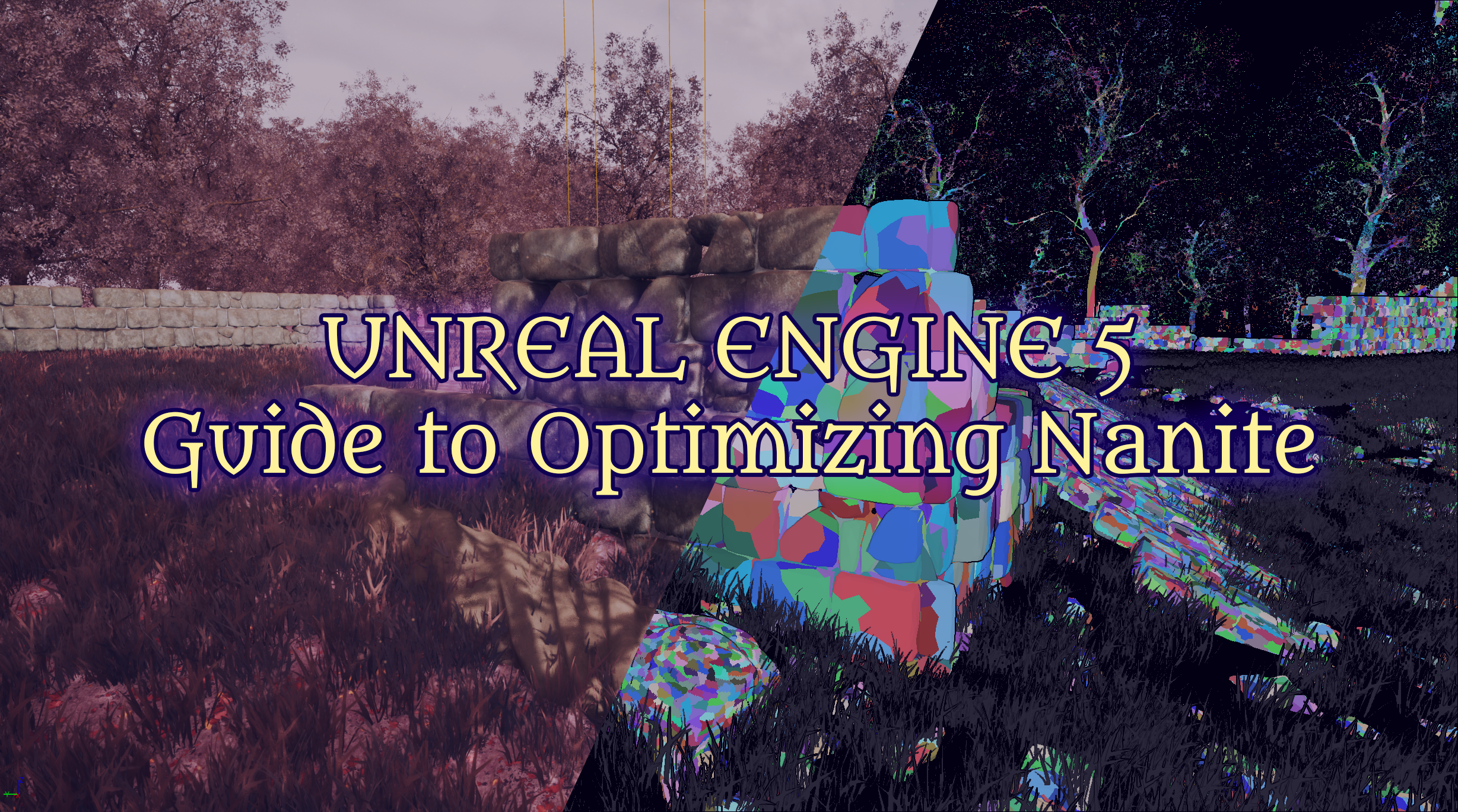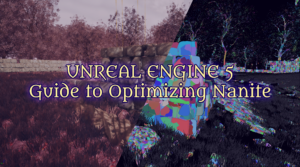Guide to Optimizing Nanite in Unreal Engine 5
- fateloom
- April 7, 2025
- Optimization, Unreal Engine
- 0 Comments

What is Nanite and Why Does It Matter?
Nanite is UE5’s revolutionary virtual geometry system that redefines traditional rendering. Here’s why it matters:
- Unprecedented Detail: Nanite renders complex, high-detail meshes at a pixel scale, perfect for organic shapes and intricate geometries.
- Efficient Performance: By bypassing the old polygon limit, it allows for massive object counts in real-time scenes without slowing down your system.
- Enhanced Workflow: Whether you’re using ZBrush sculptures or photogrammetry-scanned objects, Nanite ensures your creative vision is delivered with remarkable clarity.
Which Meshes Should Use Nanite, and How Do I Enable It?
Nanite is tailor-made for highly detailed, organic meshes. Use it for:
- High-Detail Models: Sculptures, photogrammetry scans, and complex terrain surfaces.
- Organic Shapes: Detailed architectural elements and natural forms.
For simple geometric shapes, like cubes or cylinders, traditional rendering methods are recommended to avoid unnecessary performance overhead.
Enabling Nanite is Simple:
- Access the Mesh Properties Panel: Open the specific mesh in your project.
- Locate Nanite Settings: In the “Nanite Settings” section, check the “Enable Nanite Support” box.
- Save Your Changes: Your mesh is now optimized to take advantage of Nanite’s capabilities.
Best Settings and Tips for Optimizing Nanite
Achieving the perfect balance between performance and visual quality with Nanite requires fine-tuning several key settings:
1. Globally Enable Nanite in Your Project
- Setting: Set r.Nanite.ProjectEnabled to 1 in the console.
- Why It Matters: Activates Nanite across your entire project. If you face performance issues, toggling this setting back to 0 disables Nanite.
2. Master Memory Management
- Setting: Adjust r.Nanite.Streaming.StreamingPoolSize based on your project’s needs.
- Why It Matters: For large, detail-heavy scenes, the default memory allocation may not suffice. Start at 1024 MB and increase to 2048 MB (or higher) to ensure smooth performance on systems with ample RAM.
3. Strike a Balance with Detail Culling
- Setting: Tweak r.Nanite.MaxPixelsPerEdge.
- Why It Matters: This controls which details get rendered. A lower value (e.g., 0.5) displays more detail but might impact performance, whereas a higher value (e.g., 2) improves performance at the expense of some visual fidelity. Choose based on your project’s priorities.
4. Monitor Performance and Fix Bottlenecks
- Tip: Use the NaniteStats command in the console.
- Why It Matters: This command provides an overlay displaying Nanite’s performance metrics. Additionally, using NaniteStats List can reveal all available stats, helping you identify and fix bottlenecks.
5. Boost Speed with an SSD
- Tip: Run Nanite on an SSD rather than an HDD.
- Why It Matters: SSDs offer faster data streaming, which is critical for Nanite’s performance. Upgrading to an SSD can lead to noticeable improvements in load times and overall responsiveness.
6. Fine-Tune Mesh Settings
- Setting: Explore the “Trim Relative Error” option in the mesh’s Nanite settings.
- Why It Matters: This option manages data trimming to reduce a mesh’s disk footprint. While it doesn’t directly affect performance, it’s a valuable tool for managing storage in large projects.
Pros and Cons of Nanite: What to Watch For
Pros:
- Stunning Detail: Ideal for high-resolution, complex models.
- Performance Efficiency: Reduces rendering load by focusing on visible details.
- Enhanced Workflow: Simplifies the handling of high-poly models.
Cons:
- Not One-Size-Fits-All: Using Nanite on simple geometries can degrade performance.
- Settings Trade-Offs: Adjusting detail culling may require balancing visual fidelity against performance, especially on lower-end hardware.
Final Words: Skyrocket Your Projects with Nanite!
Nanite is a game-changer for Unreal Engine 5, pushing the boundaries of what’s possible in real-time rendering. By optimizing your settings—adjusting memory management, fine-tuning detail culling, and leveraging high-speed storage—you can achieve a brilliant balance between performance and visual quality.
